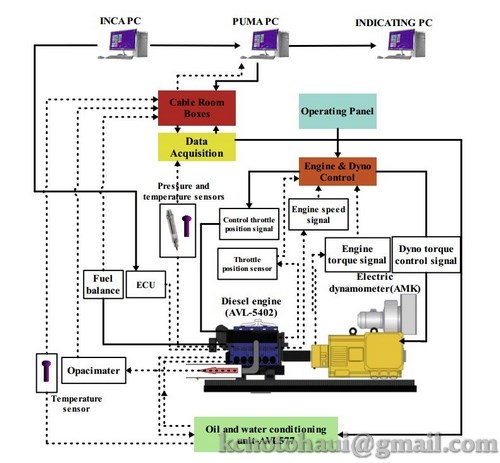Bài báo do nhóm tác giả: Jiaqiang E, MinhHieu Pham, Yuanwang Deng, Tuannghia Nguyen,Vinh Nguyen Duy, DucHieu Le, Wei Zuo, Qingguo Peng, Zhiqing Zhang Trường Đại học công nghiệp Hà Nội. Bài báo được đăng tải trên tạp chí Energy Conversion and Management (IF:5.589) nhà xuất bản Elsever số 149 năm 2018 (979-989)

Introduction:
To evaluate the performance and emissions of a test engine fueled by biodiesel blends produced fromfish processing by-products, the experimental and simulation methods were used to investigate the effects of injection pressure and timing on engine operation and correlation of these effects with varying fish-oil concentrations in the biodiesel blends. Consequently, commercial diesel fuel blended with different concentrations offish-oil biodiesel including B0, B10, B20, B30, B40 and B50 (corresponding to 0%, 10%, 20%, 30%, 40%, and 50% of biodiesel in blend) were used for the test engine. Compared to B0, the average reduction in brake power of the biodiesel fuels was reduced proportionally with the biodiesel ratio in the fuel blends. The brake specific fuel consumption (BSFC) and NOxemissions increased together with a reduction in soot, HC and CO emissions as the percentage of biodiesel increases. Moreover, the engine characteristics depend on operating parameters such as injection timing and injection pressure as also mentioned in many previous studies. When increasing injection timing, the brake power initially increases until reaching a maximum value and then decreases slightly for all types of fuels tested. Meanwhile, the effect of injection pressure differs depending on the pressure range and biodiesel blends
Keywords: Diesel engine, Varyingfish oil proportion, Exhaust emission, Biodiesel, Injection timing, Pressure injection
Toàn văn bài báo: tải về tại đây
Thứ Tư, 14:39 09/05/2018
Copyright © 2018 Hanoi University of Industry.